“Deep Winter Needs the Colors of Scandinavia” (Part Three)
March 25, 2024 1 Comment
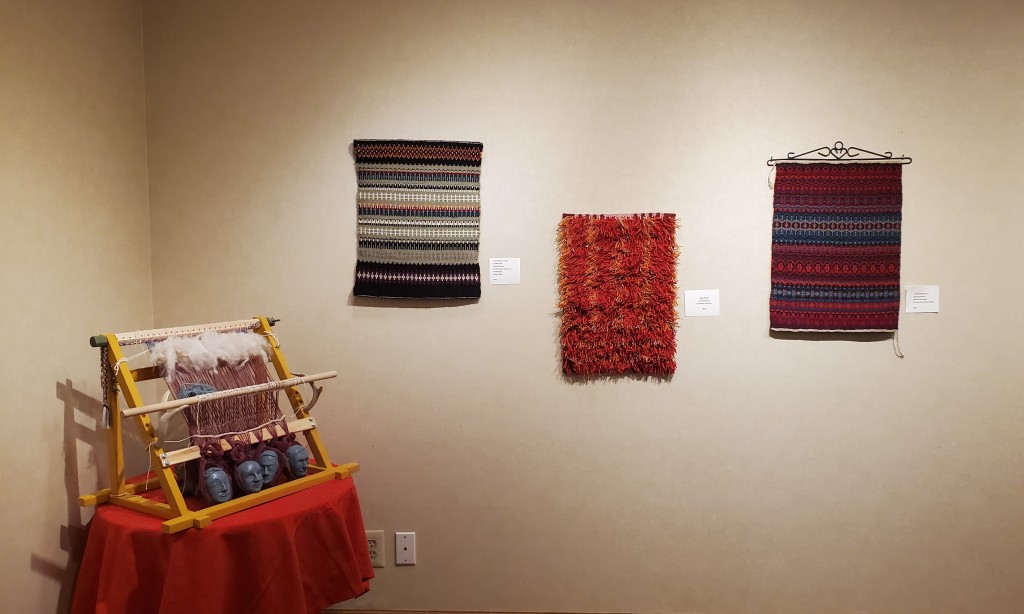
The Scandinavian Weavers exhibit “Deep Winter Needs the Colors of Scandinavia” is in its final week at Becketwood Senior Cooperative in Minneapolis. The last day to view the exhibit is April 2. Because Becketwood is a private residence, please arrange to see the exhibit by calling the front desk at (612) 722- 4077 prior to your visit to make sure the galleries are open for viewing.

Peg Hansen created Tidigare Kvinner in collaboration with her three daughters. Their inspiration was the bloodthirsty Norse/Celtic battle saga Darradarljod, in which the Valkyries weave on a warp-weighted loom built of bones and entrails, with heads of defeated warriors as loom weights. Peg writes, “In 2023, I took a loom construction class by Jess Hirsch followed by rya weaving under the instruction of Melba Granlund. One thing led to another: I built the loom. My daughter Sarah/Hannah dyed the blood-red warp using lac with additional exhaust from madder, marigold, and cochineal. The blue weft is indigo dyed, and the white wool locks are scoured Wensleydale Fleece.” The ceramic heads of contemporary power brokers, sculpted by Peg and daughter Bitsy, substitute for the traditional rocks in the spirit of the Darradarljod. The inspirational passage from the saga hangs nearby in the gallery, type-set and hand-printed by daughter Rachel.
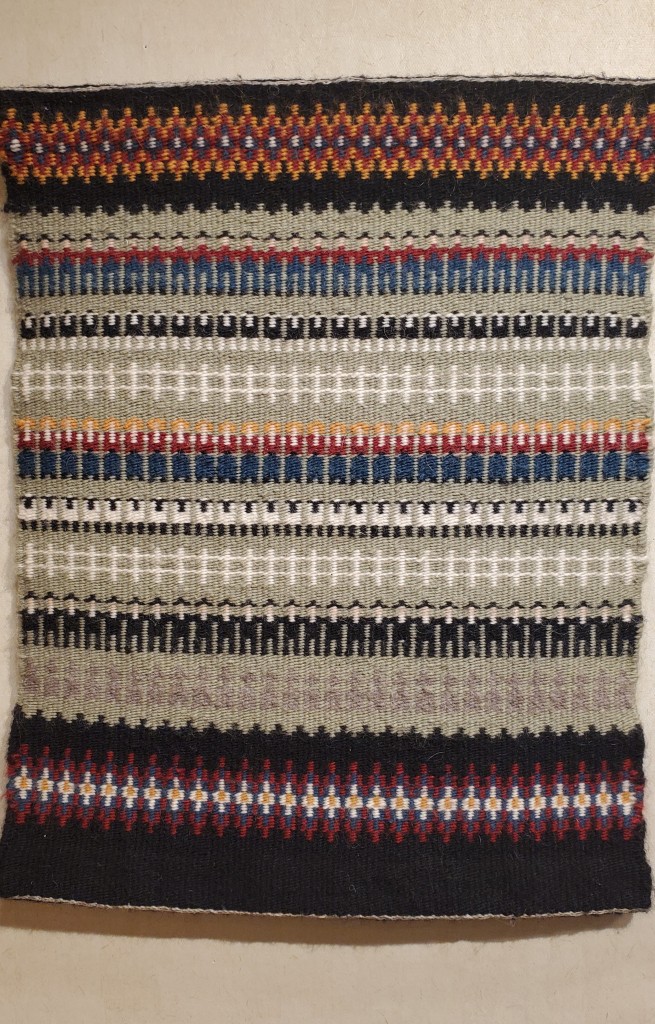
Nancy Ellison’s “Pasture by the Cemetery” is a perennial favorite, showing the figurative possibilities of krokbragd technique. Between bands of traditional geometric designs are farmers and farmwives with their flocks of sheep along with black-suited pastors presiding over a row of gravestones.
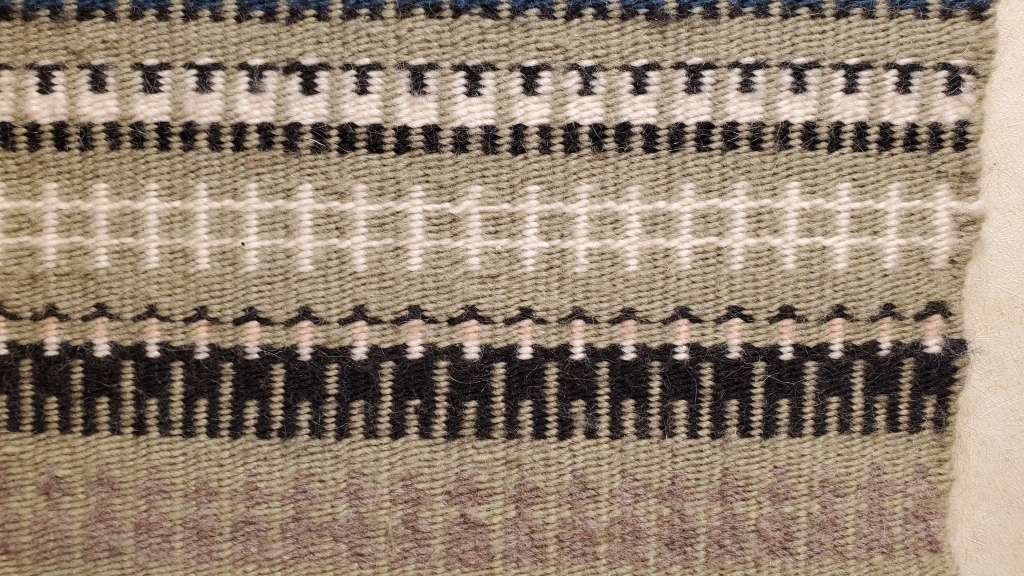
Detail of “Pasture by the Cemetery.”
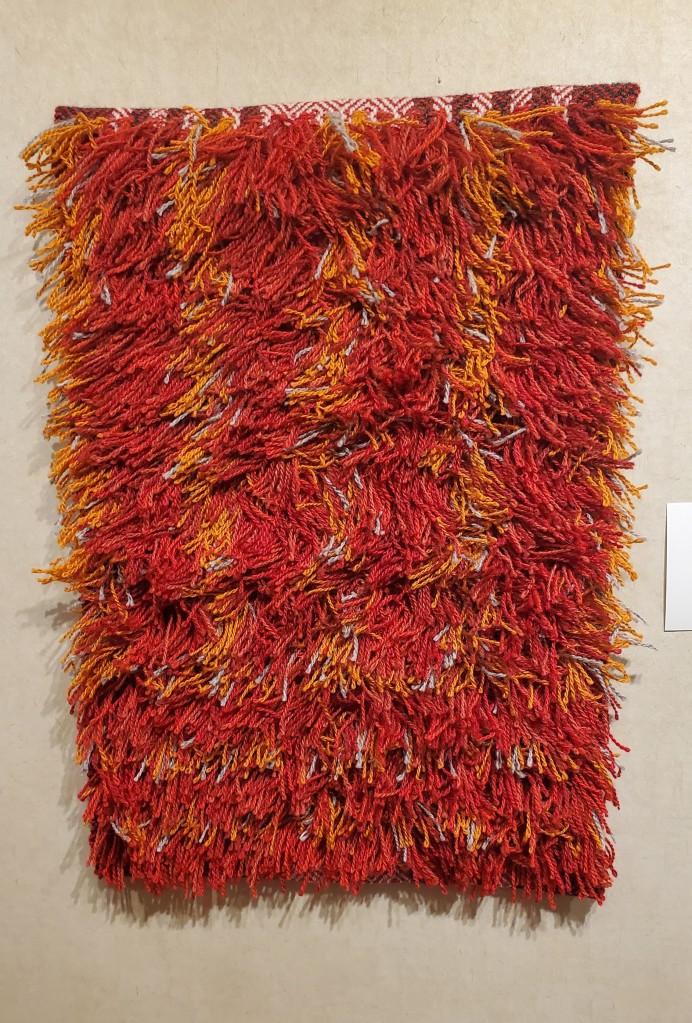
Jan Mostrom’s “Sun Dogs” is a rya woven on a backing threaded in a goose eye twill, visible at the top of the piece. Jan explains that traditional rya coverlets would be placed on a bed with the pile side toward the sleeper and the patterned side for public view. The pile trapped warmth and kept the sleeper cozy. This traditional technique is found throughout the Scandinavian region.
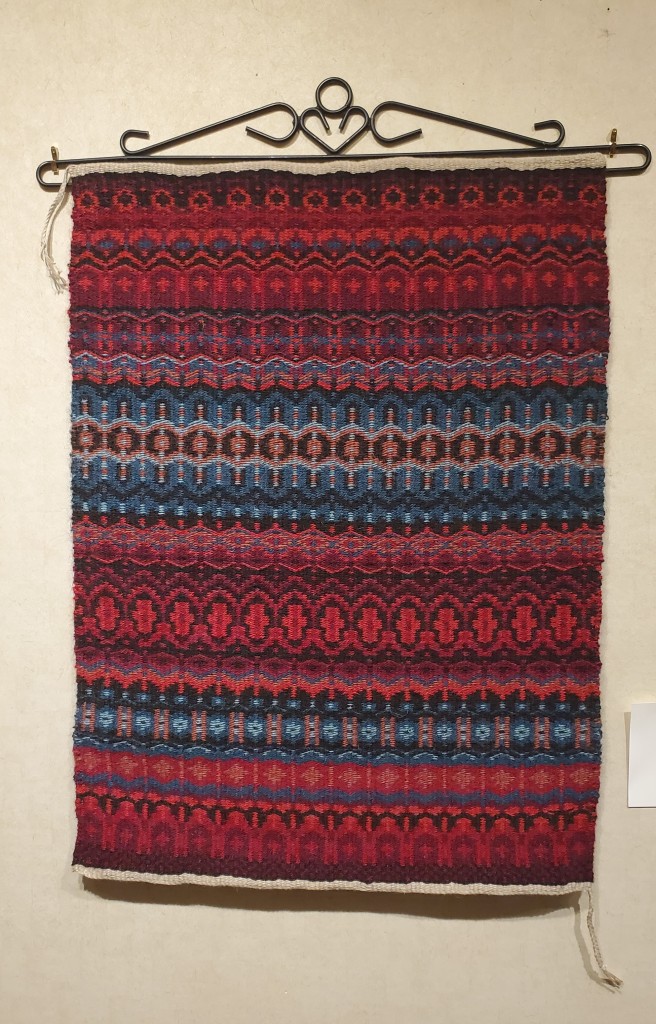
Mary Erickson wove the complex patterns of “Think About It” in bound rosepath in a class taught by the Norwegian weaver Åse Frøysadal at Vesterheim. Mary explains, “Åse stressed designing at the loom instead of using pattern drafts. I still remember her saying “think about it” as we wove. She opened up new ideas of how to weave!”
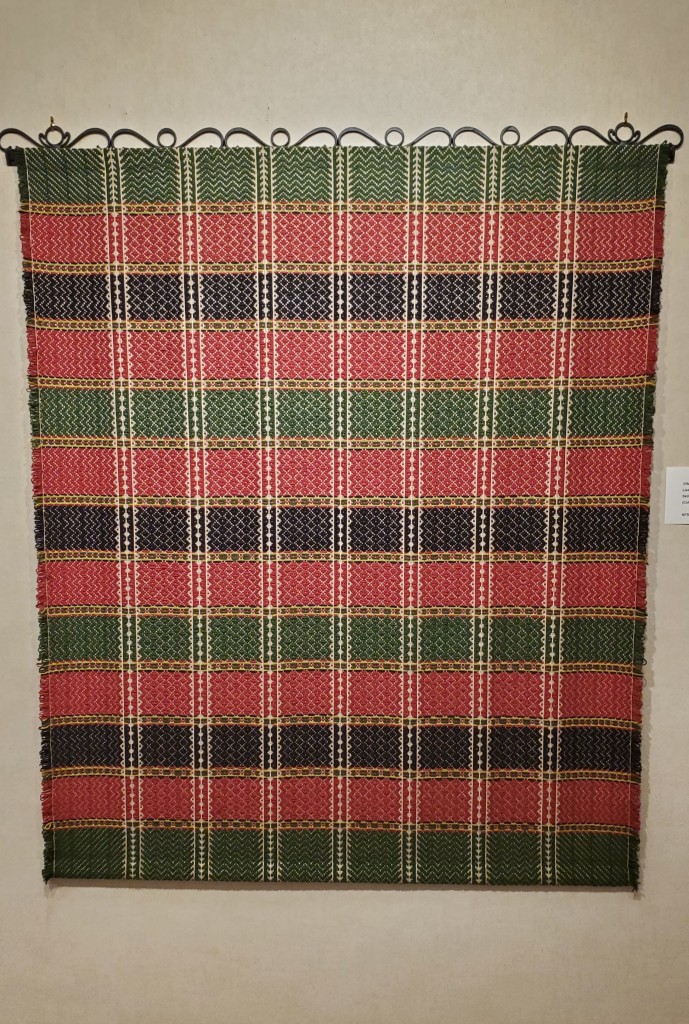
Lisa Torvik wove this wall hanging in skillbragd technique at weaving school in Valdres, Norway in 1974. She completed the piece in four days—four long days—as her time on the loom was very limited. “The hardware was an exceptional opportunity I could not pass up,” she recalls. “The husband of a teacher at the school was a metal worker. In his spare time, he did decorative wrought iron and made beautiful hangers for weavings. Carrying it home on the airplane was another story!”
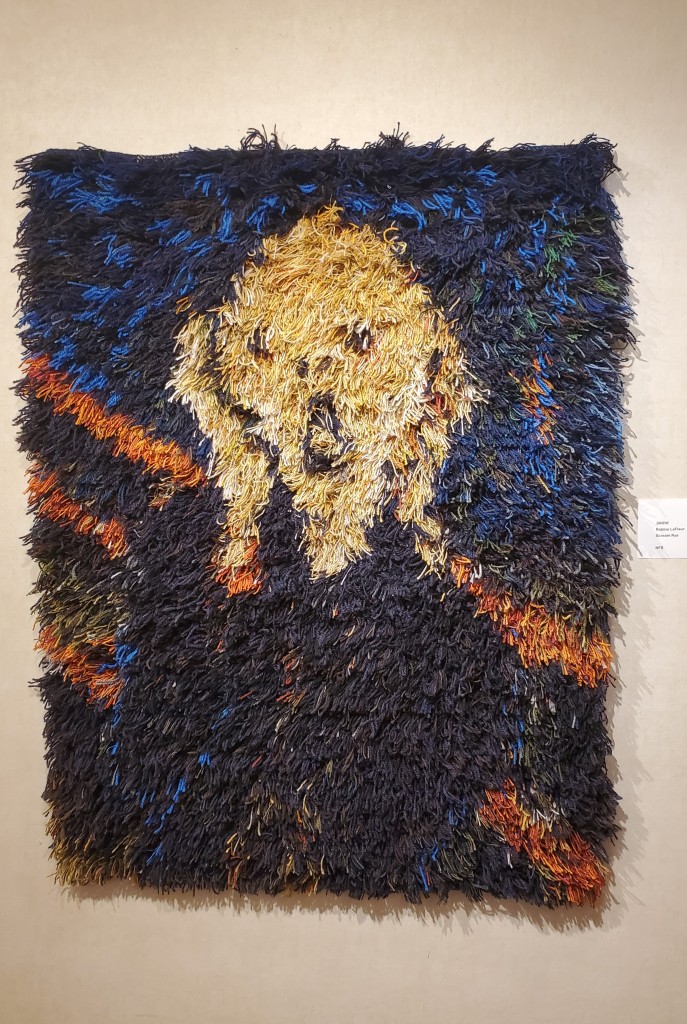
Robbie LaFleur is a fan of Edvard Munch’s famous painting “The Scream” (Skrik in Norwegian) and has woven it in many different techniques. Here it is in rya technique. A visitor to the gallery commented that it was the scariest version they had ever seen! For more of Robbie’s explorations, see https://robbielafleur.com/2015/07/27/edvard-munch-in-stitches/
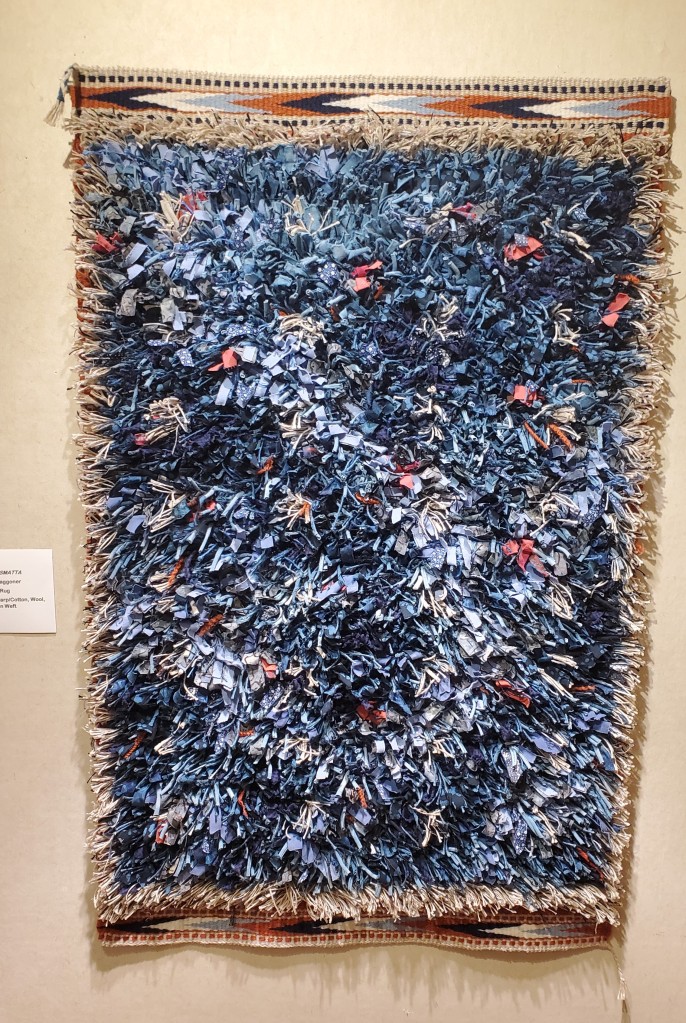
Phyllis Waggoner’s inspiration for her “Rya Trasmatta” was “Blå trasryan”, 1934, by Swedish designer/weaver Märta Måås-Fjätterström. Phyllis’ version was woven linen warp thrums—unwoven warp ends remaining on the loom after the last rug is cut off. They were combined with strips torn from old and new fabrics, and overdyed in indigo.
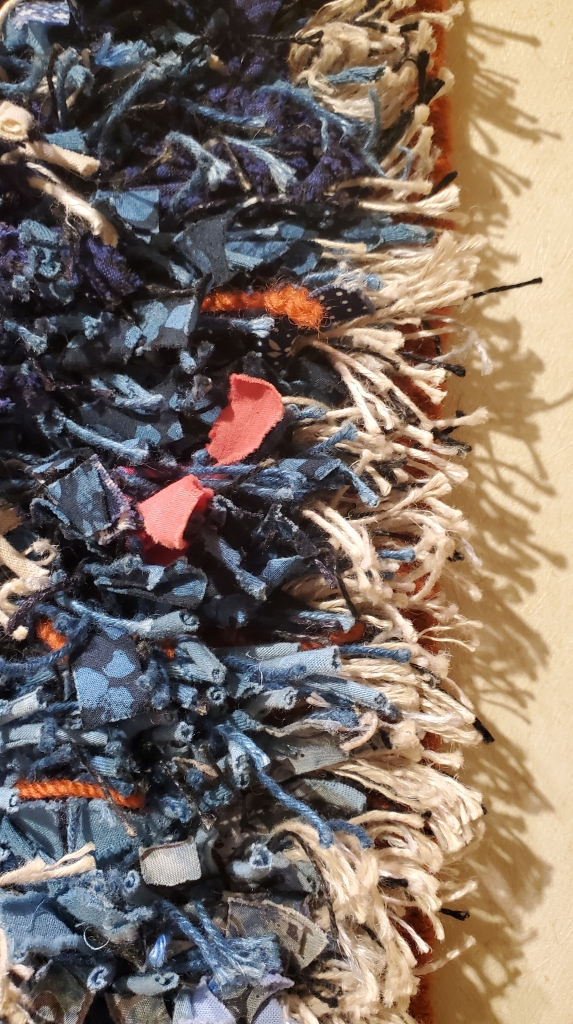
Detail of the variegated pile on Phyllis’ rya, including linen thrums overdyed with indigo. To see Märta Måås-Fjätterström’s rya, visit https://digitaltmuseum.se/011013853708/bla-trasrya-komponerad-av-marta-maas-fjetterstrom
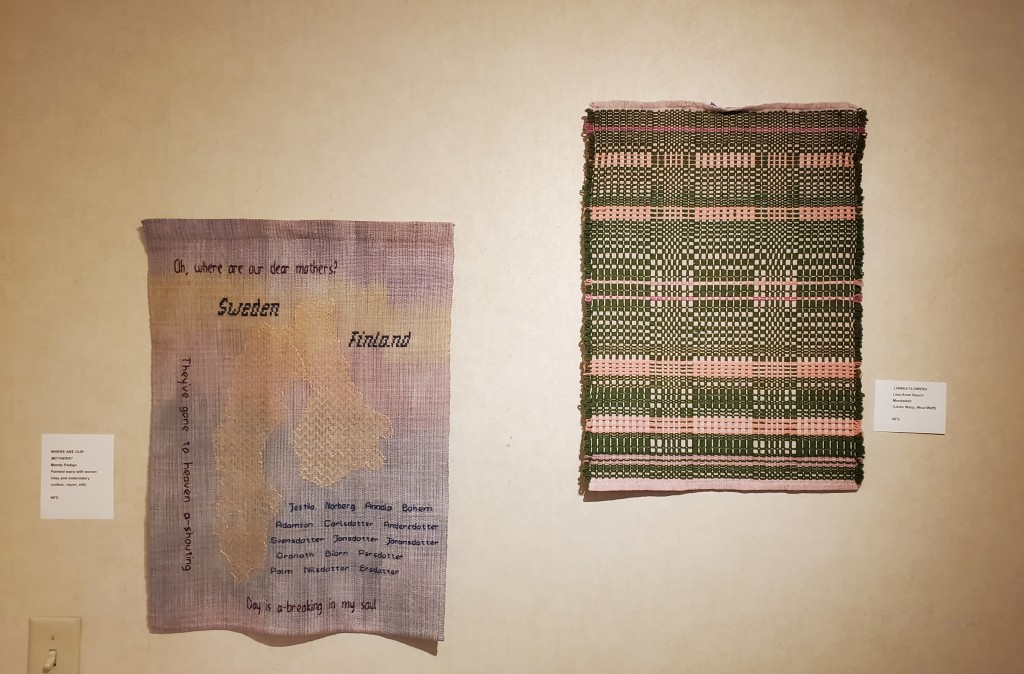
On the left is Mandy Pedigo’s “Where Are Our Mothers?” On the right is “Linnea Flowers,” a Monksbelt piece by Lisa-Anne Bauch woven as part of a Scandinavian Weavers group warp.

Mandy writes, “‘Where Are Our Mothers’ is woven inlay piece that features a map of Sweden and Finland. It is inspired by samplers and captures some of my early genealogy work to reclaim the lost names of the women in my line.” The piece includes hand-painted warp with woven inlay and embroidery. For more on Mandy’s work, visit her website at https://www.mandypedigo.com/
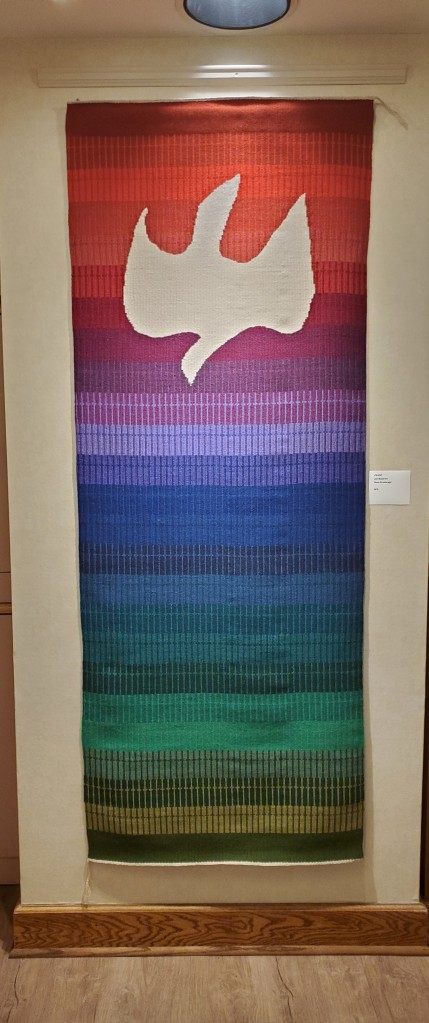
Jan Mostrom’s stunning krokbragd weaving “Peace” was woven for her church, Peace Lutheran of Plymouth. “I used liturgical colors,” Jan notes. “The dove symbol is represented in a large stained-glass window at the church. ‘Peace’ was woven tapestry-style but all in the krokbragd treadling or technique. I used multiple shuttles or butterflies to weave across each row with background and dove colors as needed.”
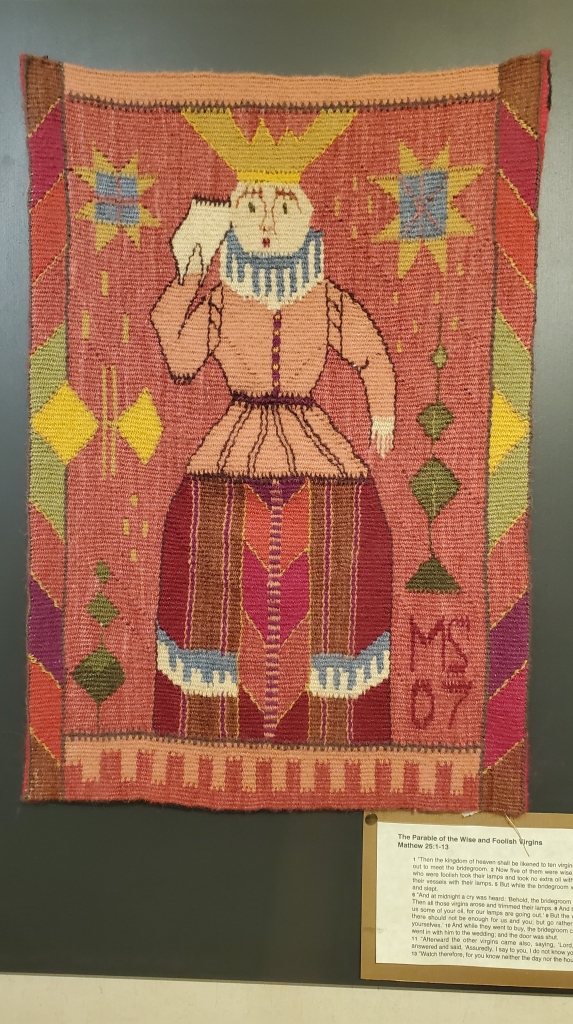
Mary Skoy’s tapestry also has a religious theme. The Biblical parable of “The Wise and Foolish Virgins” was the most popular tapestry subject in medieval Norway. The parable, from the Gospel of Matthew, warns Christians to be prepared for Christ’s return. Since they do not know the day or hour of his coming, they must be like those waiting late at night for the arrival of a bridegroom, an important and honored guest. The wise virgins bring extra oil in case their lamps run dry. The foolish do not. When their lamps inevitably wink out, they must go and buy more oil because the wise virgins refuse to share. Thus, the foolish miss the arrival of the bridegroom and when they return, find the doors to the wedding celebration locked. In the traditional tapestries, as in Mary’s, they weep dramatically into their handkerchiefs. “I have called this tapestry ‘I Thought We Were Friends,'” Mary notes, “because I think the five who were saving their oil and didn’t offer to share with the five who had used up their oil were mean and selfish!”

Mary thoughtfully displayed her tapestry along with the relevant Bible verses, the cartoon used to weave it, and a sample card of all the colors in the wool yarn. She also included her initials and the date of the weaving, because far too many of our weaving ancestors did not, and their names and stories were lost to time. She encourages other weavers to do the same!
The Scandinavian Weavers would like to express our sincere thanks to the Becketwood community for their kind invitation to exhibit in their gallery, as well as their hospitality. And although it is now spring, deep winter seems to have returned in the form of a snowstorm—a fitting backdrop to the bright and warm colors of Scandinavian weaving.
Lisa, Your blog